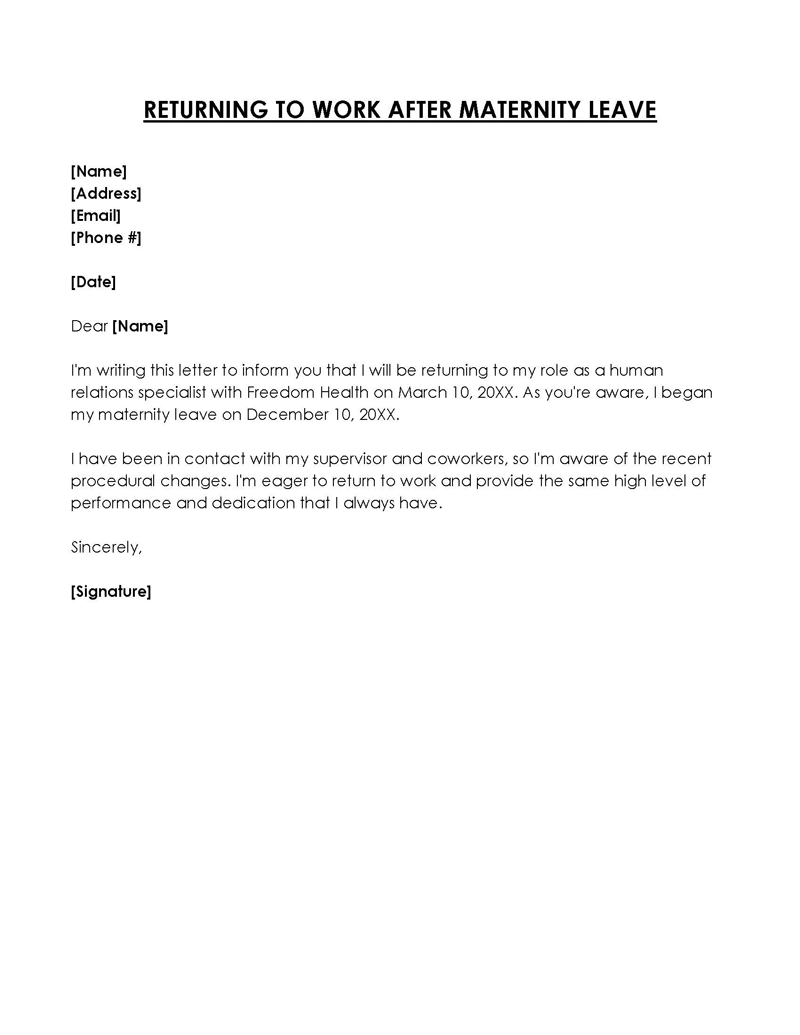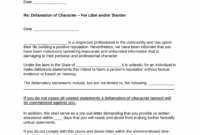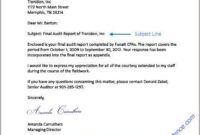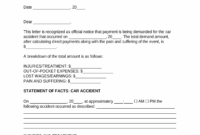Welcome back! Returning to work after a leave can feel like a mix of excitement and a little bit of administrative heavy lifting. Whether you’ve been away for a medical reason, family leave, or even an extended vacation, there’s often a formal step involved to inform your employer of your readiness to resume your duties. It’s a moment that signifies your readiness to re-engage with your professional life and contribute to your team once again.
This isn’t just a formality; it’s a clear communication that helps your workplace prepare for your reintegration. Having a clear, professional, and well-structured letter makes this process smooth for both you and your company. It ensures that necessary arrangements, from payroll to project assignments, can be made in advance. That’s where a reliable return to work letter template comes in handy.
Understanding the Purpose of Your Return to Work Letter
A return to work letter serves as your official notification to your employer that you are prepared and able to resume your professional responsibilities. It’s more than just a simple email; it’s a document that confirms your end-of-leave status and often initiates the necessary logistical steps for your return. Think of it as your formal handshake back into the office environment, ensuring everyone is on the same page regarding your availability and readiness.
Depending on the type of leave you’ve taken, the requirements for this letter might vary slightly. For instance, if you’ve been on medical leave, your employer might require a doctor’s note clearing you for duty. For parental leave, the focus might be more on your official return date and any potential requests for flexible arrangements. Clarity and precision in this letter are paramount to avoid misunderstandings and ensure a seamless transition back into your role.
Beyond just stating your return date, this letter can also be an opportunity to address any specific needs or conditions related to your return. For example, if you need a phased return or specific accommodations due to health reasons, this is a good place to gently introduce those discussions. It sets a professional tone and demonstrates your commitment to re-engaging with your role effectively while also looking after your personal well-being.

Crafting this letter can seem daunting, but it doesn’t have to be. With a well-designed return to work letter template, you can ensure all crucial information is included without missing any vital details. It acts as a guide, prompting you to fill in the necessary specifics and helping you present a polished, professional document that effectively communicates your message.
Key Elements to Include in Your Letter
- Your full name and contact information
- The date of the letter
- Employer’s name and address
- A clear statement of your intention to return to work
- Your official return date
- Reference to your original leave request
- Any required medical clearance (if applicable)
- Your signature
Practical Tips for Using a Return to Work Letter Template
While a template provides a strong foundation, customizing it to your specific situation is crucial. Think of the template as a robust skeleton; you need to add the flesh and blood of your unique circumstances. Generic letters can sometimes miss the nuances of your particular leave or your company’s internal policies. Always review your company’s HR guidelines or employee handbook for any specific requirements regarding returning from leave, as these can vary significantly.
When you’re filling out your chosen return to work letter template, pay close attention to dates. Your official return date should be clearly stated and ideally confirmed with your manager or HR department beforehand. Discrepancies in dates can lead to payroll issues or delays in restoring your access to company systems. A little proactive communication here can save a lot of headaches later and ensure everything aligns perfectly with your re-entry.
Consider the tone of your letter. Even if you’ve had a challenging leave, maintaining a professional and positive tone is always beneficial. Expressing your eagerness to rejoin the team and contribute shows a good attitude and a readiness to pick up where you left off. If there are any pending issues or requests, phrase them clearly and concisely, focusing on solutions rather than problems. Remember, this letter is often the first formal interaction your employer has with you after your absence, so make it count.
Lastly, proofread your letter meticulously. Typos or grammatical errors can undermine your professionalism and create an impression of carelessness. It’s often a good idea to have someone else quickly read it over before you send it, just to catch any mistakes you might have overlooked. Once it’s perfect, determine the best way to submit it. Is it an email to HR, a physical copy to your manager, or uploaded to an internal portal? Confirming the correct submission method ensures your letter reaches the right people promptly.
- Always personalize the template with your specific details and dates.
- Cross-reference your company’s HR policies for any unique requirements.
- Confirm your return date with HR or your manager before sending.
- Maintain a professional and positive tone throughout the letter.
- Proofread carefully and ensure correct submission method.
Navigating the administrative aspects of returning to work doesn’t have to add extra stress to an already significant transition. By utilizing a clear and comprehensive template, you empower yourself to communicate effectively and professionally with your employer. It simplifies what could otherwise be a complicated process, allowing you to focus on getting back into your routine and responsibilities.
A well-crafted letter ensures your return is smooth and understood by all parties. It sets a positive precedent for your reintegration into the workplace, ensuring your return is celebrated and efficiently managed, letting you fully dive back into your responsibilities with confidence and ease.



